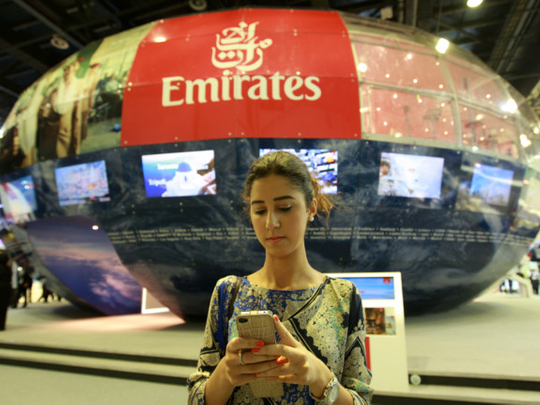
Once the tweet “Win a flight to Venice @Emirates. Test your parking skills on the latest #ATMDubai game,” got around, what followed were frenzied re-tweets. “Hows your parking?” said one that went on to “The game is on for the travel industry”.
And indeed it was, as was evident with the extensive use of social media at the just-concluded 20th edition of the Arabian Travel Market, the region’s top travel and tourism exhibition.
“We created simple and socially addictive online games, designed to be released through our social media communities, primarily Facebook and Twitter,” said Luke Boulton of Reed Travel Exhibitions, the organisers of Arabian Travel Market. “The idea was that games are easily shared between colleagues and friends, which create a viral effect. These games carry our branding, as well as that of our sponsors, which gives us huge potential for exposure to key target markets.”
Using social media responses to ATM’s full following on Twitter gave organisers the opportunity for a superior customer service experience as delegates received instant responses to their questions. It also allowed organisers to widen their network.
“For instance, tweeting interesting content featuring insight or comment from the likes of TripAdvisor, Google, etc, which is re-tweeted, allows us to tap into their — far larger — networks,” added Boulton.
As Facebook comments and Twitter feeds gave first-hand reports of the latest news from the four-day event, at the exhibition venue, several talks were hosted on how social media and gamification are increasingly being used by hotels, airlines and travel operators to promote their brands, improve customer service and drive sales up.
Gamification, which means gaming but not in the entertainment kind of way, is quite simply the concept of applying game-design thinking to non-game contests to make them more fun and engaging. If you own a loyalty card, keep track of air miles, visit Starbucks to get reward points, or are a member of Samsung Nation, you know what gamification is. It’s how companies have their customers come back for more.
The use of smartphones coupled with the irrepressible urge of consumers to stay connected, post comments and gain social recognition on social media sites, is propelling gamification forward.
Bruce Martin gamified his website to increase business. As operations director of Online Travel Training (OTT), a provider of travel and tourism e-learning, Martin trains travel agents to sell products. When he needed agents to take up more courses, Martin gamified his website by inventing virtual badges of achievements for each course completed. The result was a 65 per cent increase in business.
“They are connected but they can live on their own,” said Martin, regarding the connection between social media and gamification. “The elegant way of bringing social media into the equation is to allow them to post their success and challenges, and compare with their colleagues, so that the social media element is the publication of your gamified success.”
For ATM, the gamification doesn’t end with this event. “We plan to develop our offering over the coming year, in tandem with our social media activities, to rapidly and effectively reach a large audience online,” says Boulton.
The Emirates park the car and win game, designed and launched by ATM on Twitter, subtly speaks of Emirates’ sponsorship and 20-year partnership with the annual event. And in the same visual space, leads players to the airline’s stand at the exhibition. And while visitors flip out their mobile phones to get online and park the car, what they are also doing is developing an affinity with both brands.
Meanwhile Tweeps like me are still trying to park and get to Venezia for free.
— Shahana Raza is a UAE-based freelance writer


